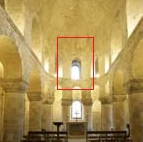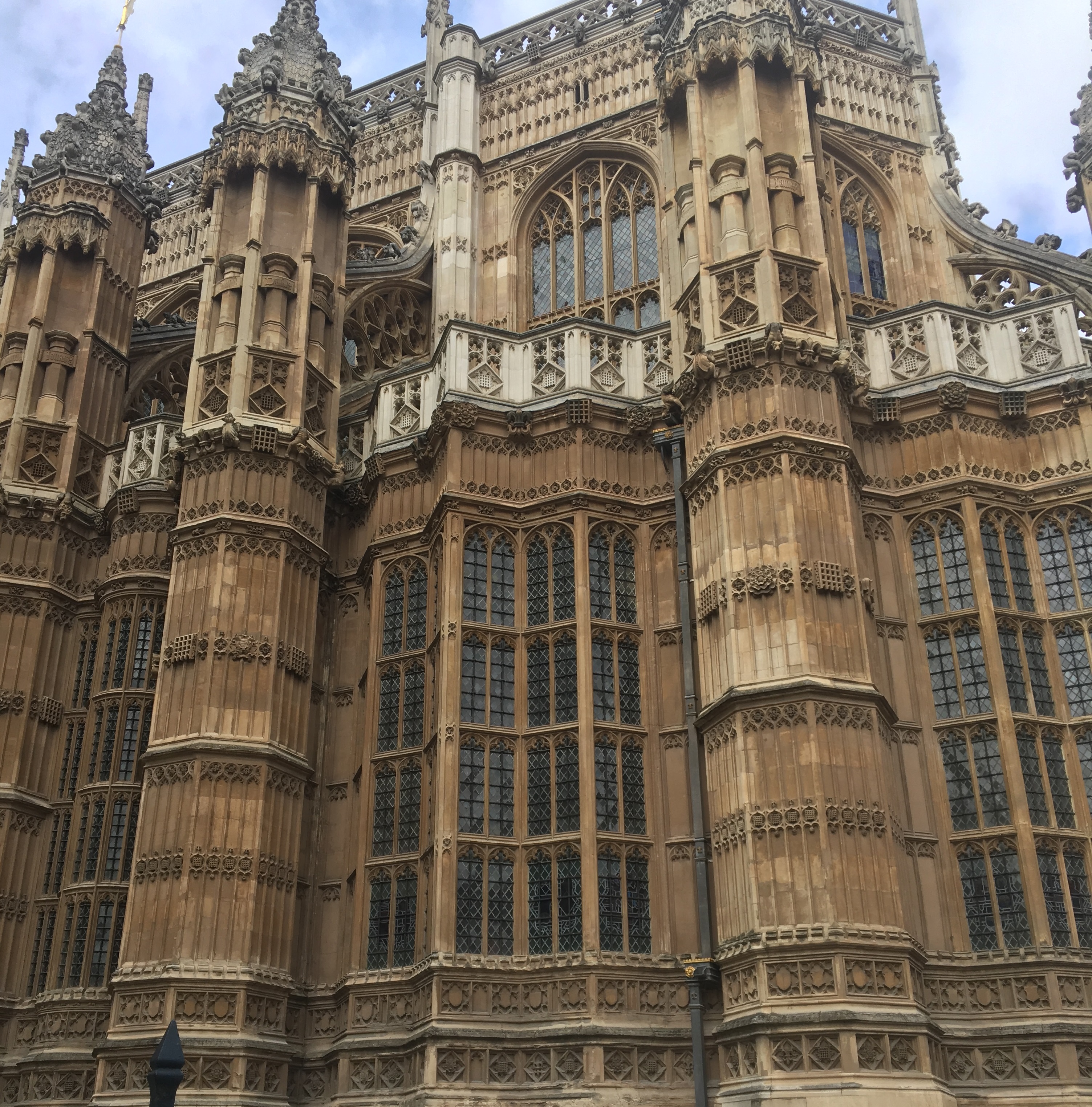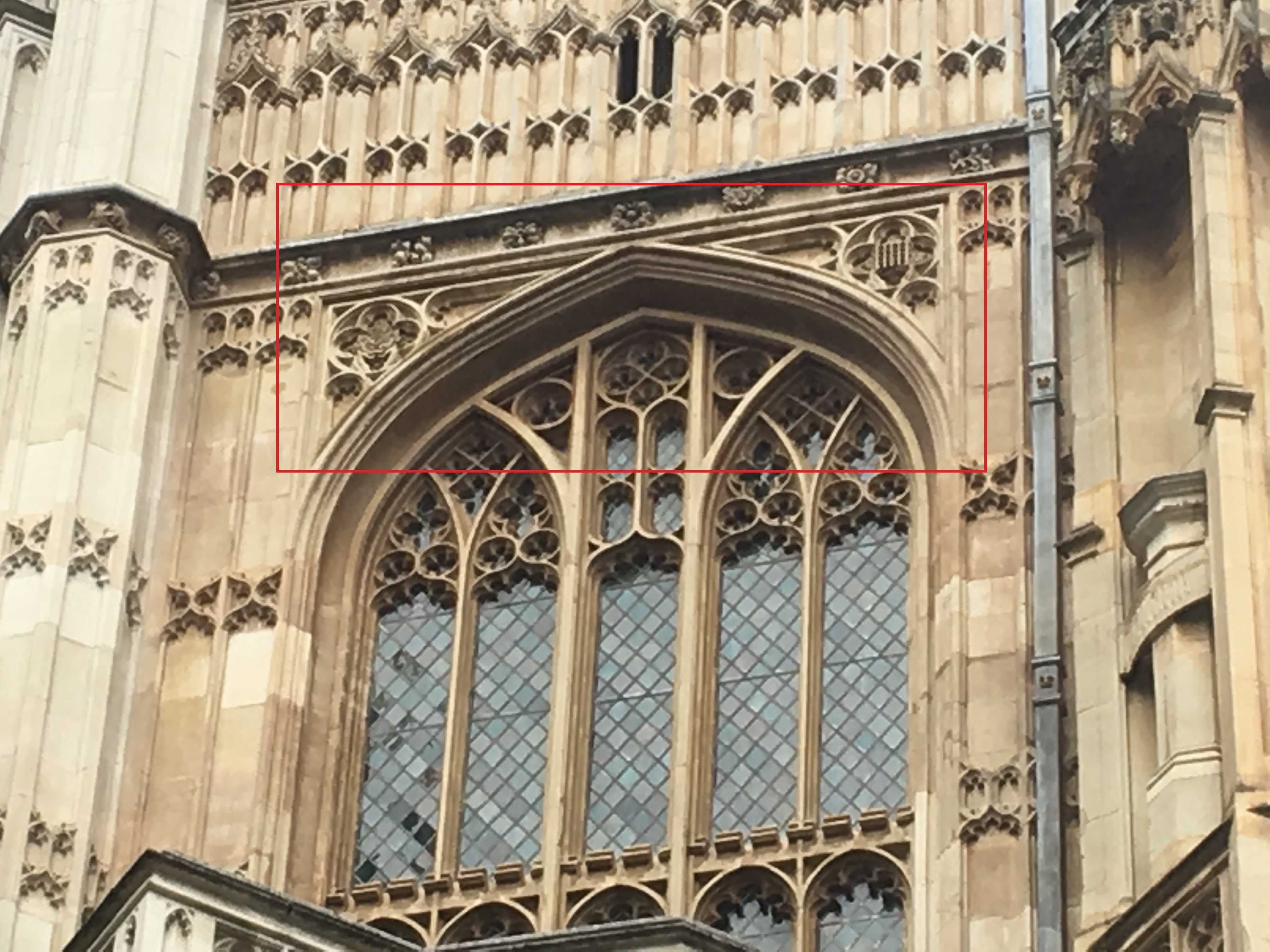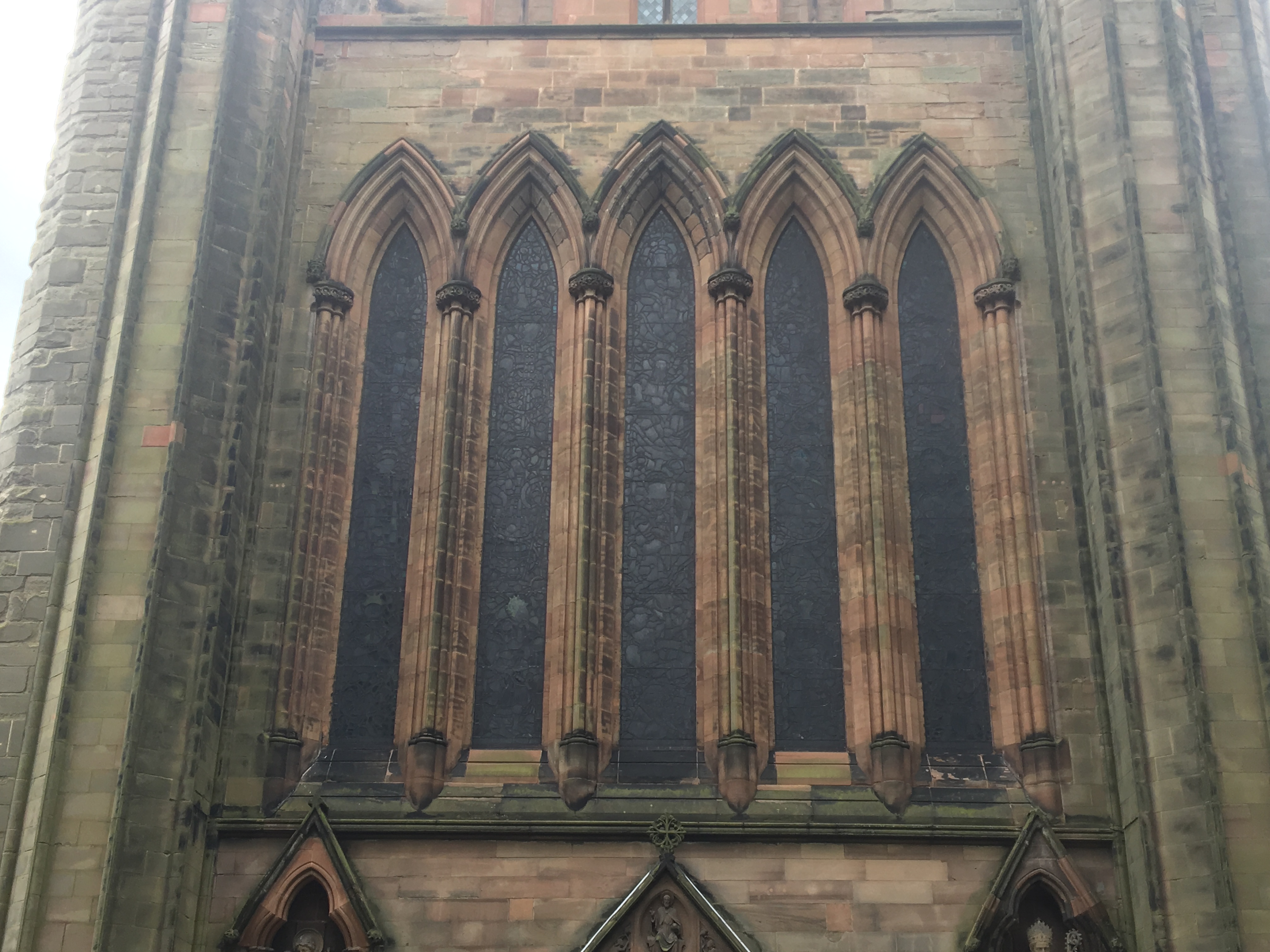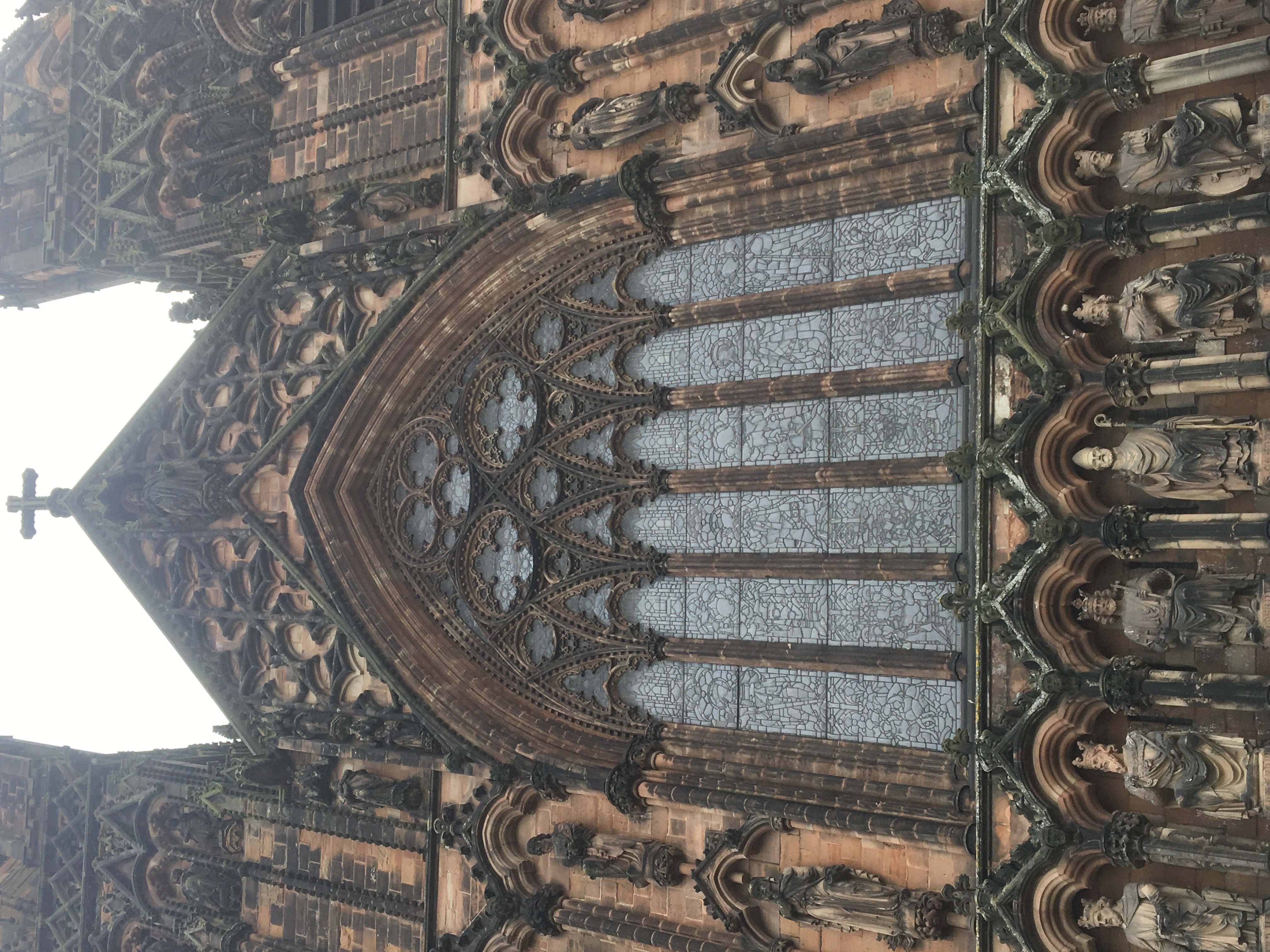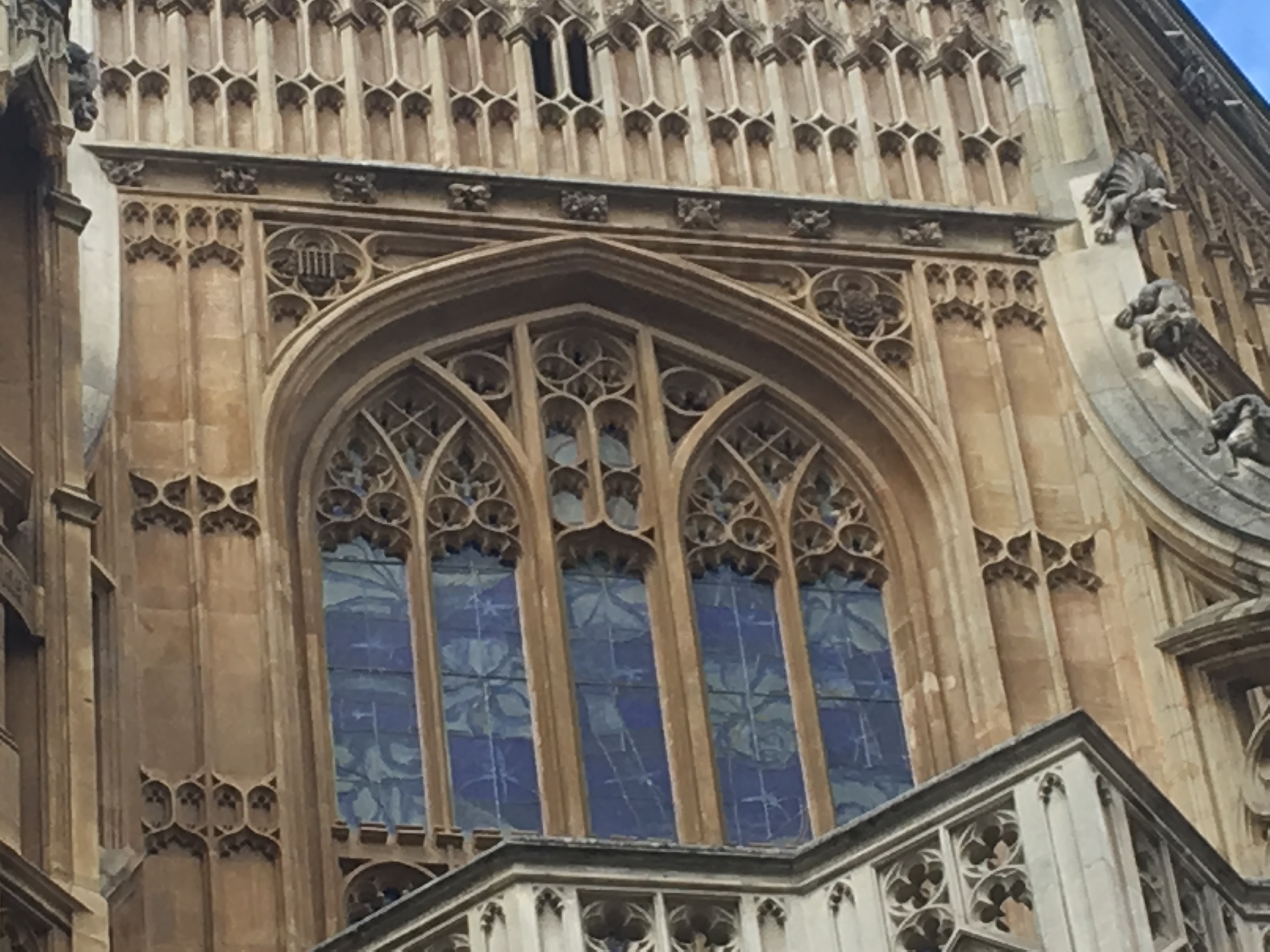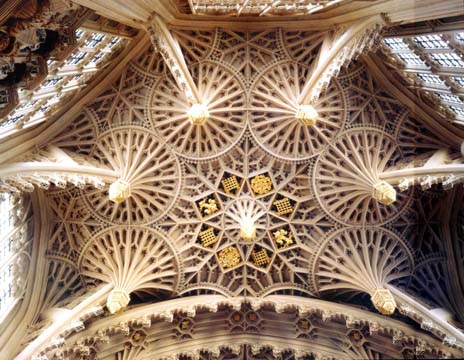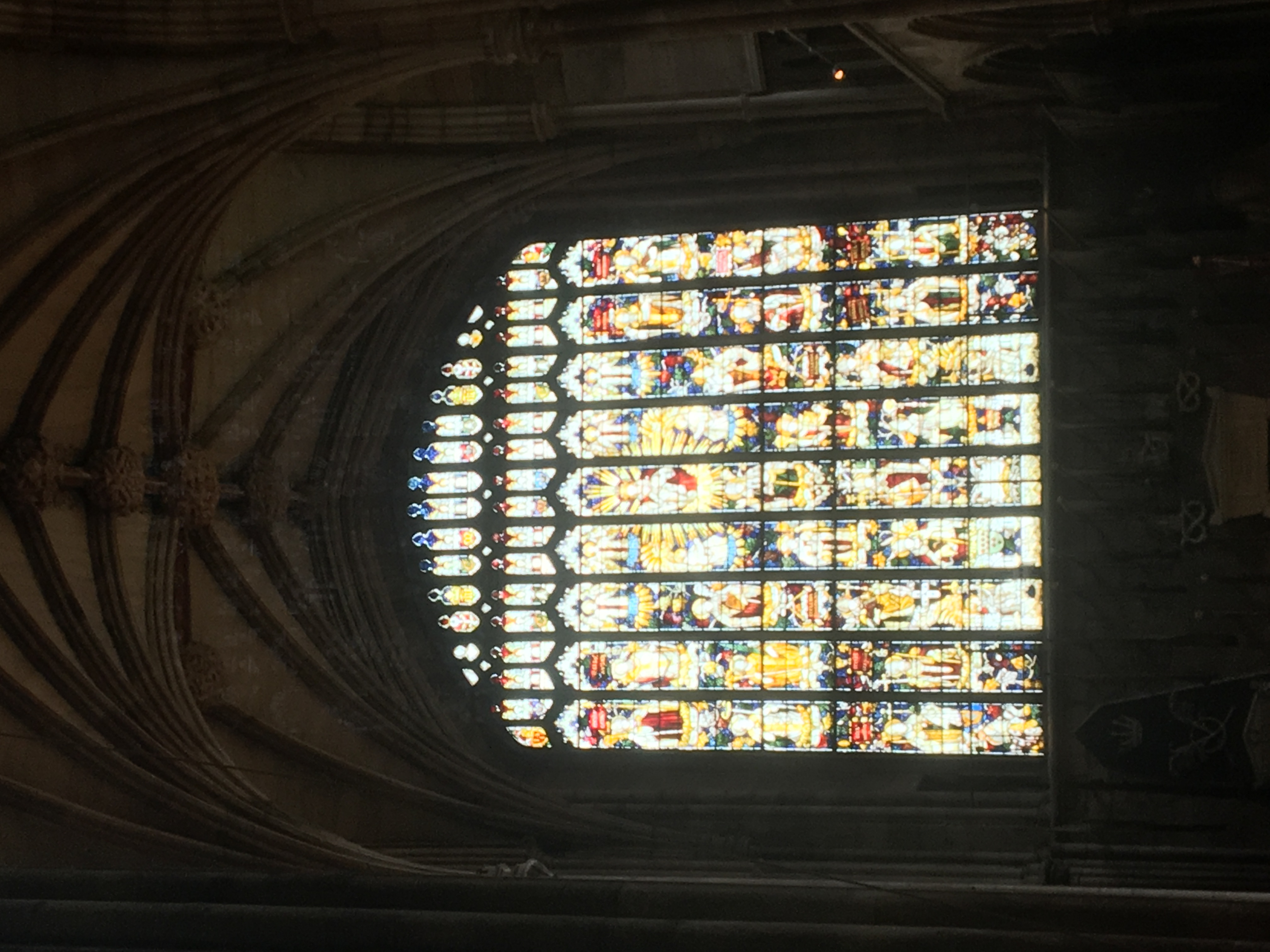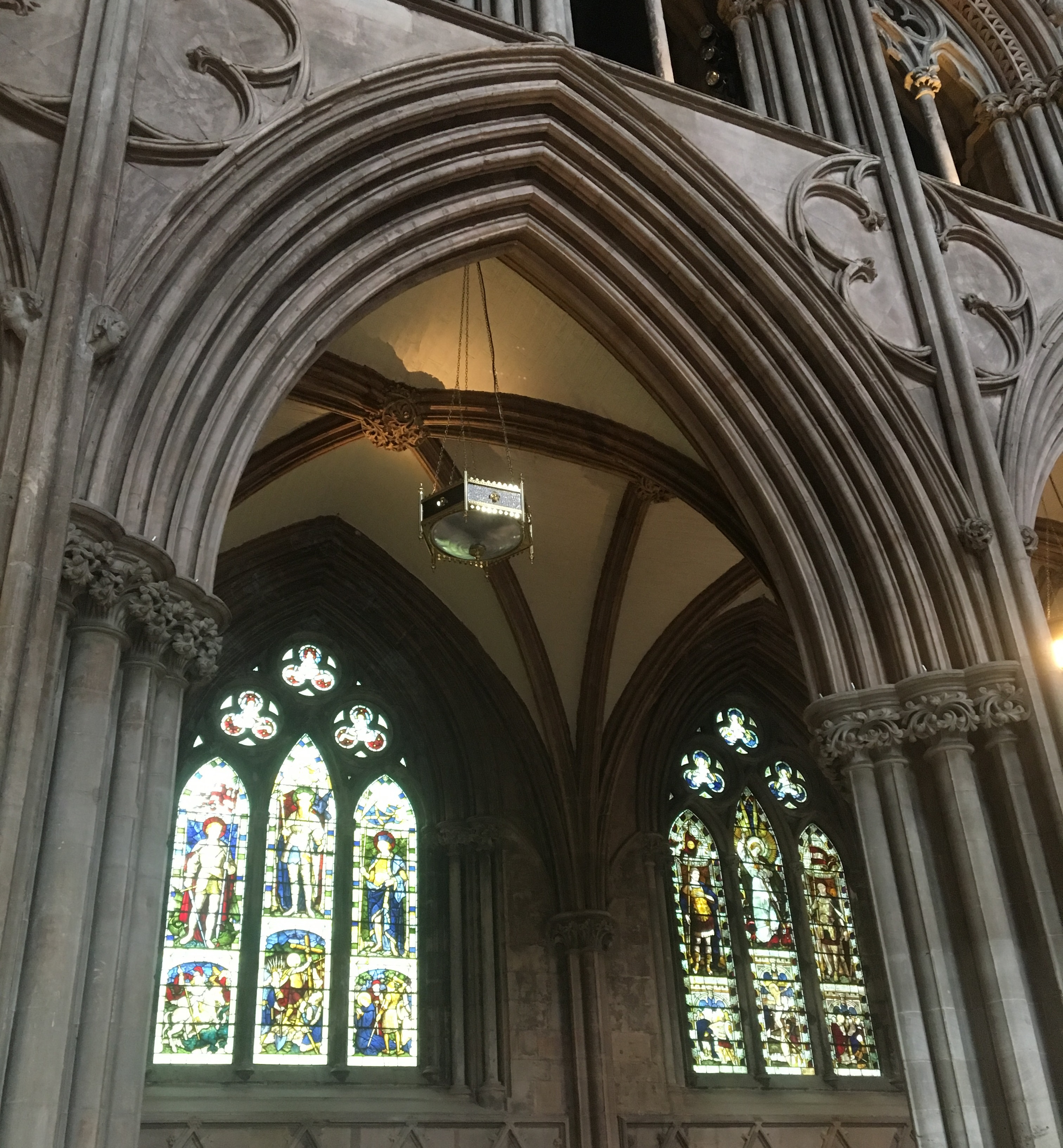Cathedral Architecture
From Londonhua WIKI
Cathedral Architecture
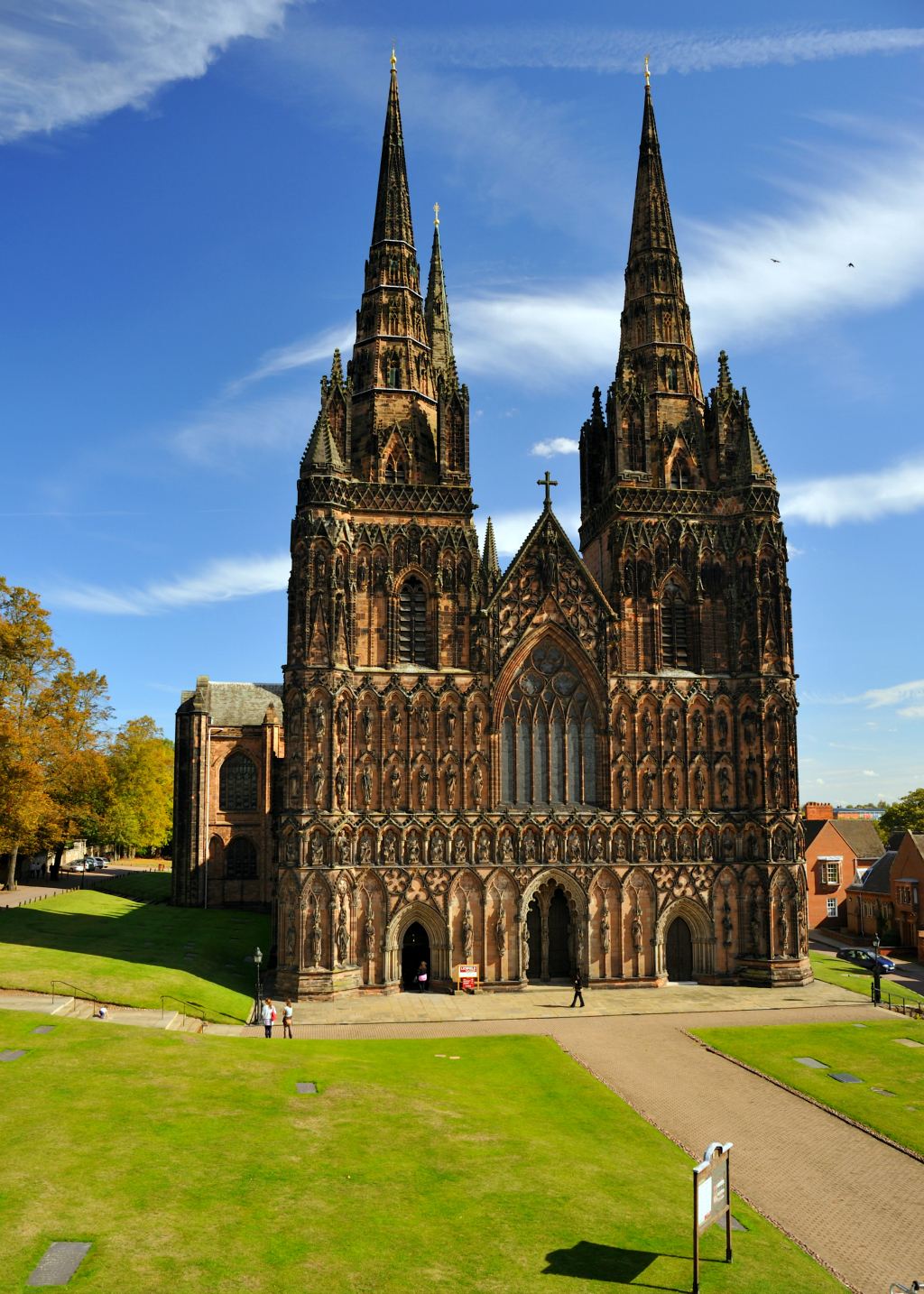 Lichfield Cathedral [1] | |
| Established | 1340 [2] |
|---|---|
Contents
Abstract
This project here in England was about the styles of the many churches around the country. I visited several of these to get a first person experience of them and photos. After outlining what makes the three chosen styles unique, those photos are then the basis for illustrating those differences between the styles. This area of study is something different for me as I have only taken classes in History, none in Art or Architecture.
Introduction
This project covers what makes each architectural style chosen unique and then illustrates that with a visual comparison through photographs. The three styles chosen were European and English while at the same time having unique aspect to differentiate them. This is important as to show the different styles and what makes them distinct while also observing how each one influences the others. This was my first immersive experience in architecture so it was a learning experience along the way.
Section 1: Background
Norman
Norman Architecture is a subcategory of the Romanesque style along with Anglo-Saxon. The Anglo-Saxon period came to an end in England when The Normans attacked in 1066 from western Europe.[3] The key item that made both of these belong to Romanesque was the semi-circular arch. These semi-circular arches were used in doorways, window frames, vaults, and arcades. Previously, the Anglo-Saxon churches were tall, narrow buildings with quite thin walls, but this changed with the Norman style. The Norman style was built in contrast to this with the churches being built with a wide base and the thick walls.[4]
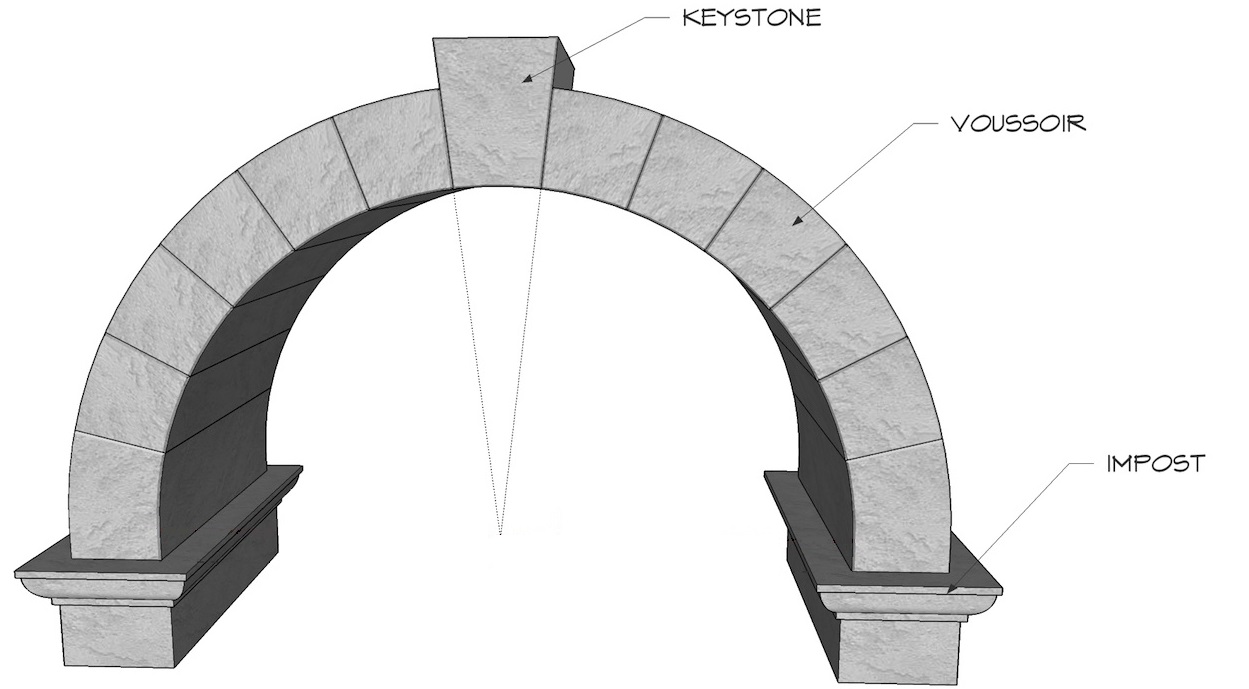
Norman Architecture began in approximately 1060 and roughly lasted through the year 1190.[6] These years are an estimate that is widely accepted as there is always overlap in changing styles. The Norman style took many cues from the Romans to include in their style. The main one being the semi-circular arch and its design. The semi-circular arch at its time was revolutionary, it was able to suspend massive loads over an open area. This was due to its design which included several key parts, voussoirs and the key-stone. The voussoirs were the wedge shaped stones that made up the arch passing the load to the next outer stone. The key-stone is the central stone in the arch and locks all the stones of the structure into place.[7] In addition to the semi-circular arches, some of the key characteristics included in Norman architecture were large cylindrical pillars, vaulting and small windows.[8] The windows in Norman churches were quite small, so to allow the maximum amount of light through them a distinctive technique was used. This technique is known as splaying, which is where the inside or outside of the window is wider than the middle of the window.[9] Another characteristic, vaulting, when used, was sometimes made of wood but, was usually made of stone. When it was made of wood the vaulting was quite flat. When stone was utilized, it was constructed in a round arch shape. [10] As the year 1200 approached, the semi-circular arch gave way to the pointed arch which began the Gothic style and marked an end for the Romanesque style.
Notable Norman Style Cathedrals/Chapels[11]
- Rochester Cathedral - The second oldest cathedral in England, having been founded in 604. The Nave, parts of the crypt and facades were built in the Norman architecture. Later additions to the cathedral because of fire damage were made in the Gothic style which included the Quire and the roof of the Nave.[12]
- St. John's Chapel at The White Tower
- Gloucester Cathedral
Decorated Gothic
Decorated Gothic is a subcategory of the Gothic style along with Perpendicular and Early English. The Gothic style's key element that united them was the pointed arch. This large transformation from the semi-circular arch to the pointed arch began around 1200 but the Decorated Gothic style began in 1250 with the addition of several key modifications and lasted until 1360.[13] This style also has been divided into two subcategories known as Geometric and Curvilinear. Geometric spanned from 1250 to 1315, while Curvilinear covered 1315 to 1360.[14] The Geometric period was focused on the circle which was mainly used in the tracery, stonework elements that supported the glass, but could also be found elsewhere. The Curvilinear period reduced or stopped its use of the circle, but introduced the Ogee and used it extensively.[15]

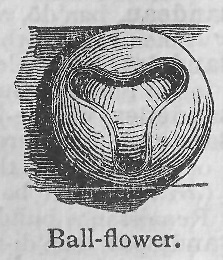
As Gothic Architecture evolved, distinctive patterns began to emerge. In regards to the Decorated style, as the name suggests, it involved extensive use of decorative elements. Several of these distinctive elements that made up the Decorated Gothic style include windows with mullions, elegant tracery of the very large windows including trefoils and quatrefoils, and vault ribbing.[18] Compared to the previous Early English period the large windows became wider in proportion to their height.[19] Later decorated styles expanded upon the ribbed vaulting by adding small ribs called liernes between other ribs. The architects formed geometrical shapes with these liernes that kept with the style.[20] At the intersection of these ribs bosses, elaborately carved ornaments, began to be used here in the Decorated period.[21] Another important decorative element that added to the aesthetic was the ball flower.[22] The ball flower was a partially opened flower carved into a sphere. All of these distinctive elements accumulated to make the Decorated Gothic style which created some amazing buildings, but as time went on the Decorated style gave way to the Perpendicular style which is explained below.
Notable Decorated Gothic Style Cathedrals/Chapels[23]
- Lichfield Cathedral
- Exeter Cathedral
- Ely Cathedral
Perpendicular Gothic

Perpendicular Gothic, also known as the Rectilinear Period, followed directly after the Decorated Gothic period. It began in 1360 and lasted until 1550.[25] It was thought that the simplification introduced, compared to the Decorated Gothic style, was due to the Black Plague and its effects on the labor force in England. This idea was proven incorrect with Gloucester Abbey's south window and Old St. Paul's cloister remains. One idea as to why decorations were scaled back was that it was for cutting costs, but that is just a possible reason and the real reason may never be known.[26]
This style, Perpendicular, belonged to the Gothic style and utilized pointed arches extensively. Perpendicular built upon the Decorated Gothic style in some aspects, and scaled back in others. A key area of scaling back occurred with the reduced tracery of the windows, while Perpendicular kept the large windows. One of the main differences that was introduced was an emphasis on vertical lines, especially the mullions of the windows, which were thinner than previously used ones.[27] Commonly crossing the mullions in Perpendicular are transoms, a horizontal crossbar in a window.[28] A change to the arch also came with this new style. The pointed arch gave way to a slightly flatter arch called the four-centered arch. This new arch was utilized alongside the existing pointed arch in the Perpendicular style. Vaulting was also expanded with this period and became more complex than previous styles; during this period it was know as fan vaulting. Overall this style was not a revolution but an evolution, building upon the previous Gothic styles.
Notable Perpendicular Gothic Style Cathedrals/Chapels[29]
- York Cathedral
- Henry VII Chapel at Westminster Abbey
- Manchester Cathedral
Section 2: Deliverable
For my Deliverable I utilized my background information about Norman, Decorated, and Perpendicular styles to compare the key differences between the styles through a visual means. I traveled to several Cathedrals and Chapels to gather most of the photos as seen below, unfortunately there were some locations where photos were not allowed inside so a couple photos were not taken by me.
Norman vs. Perpendicular
Window Size
Norman[30]
As seen in the two above photos, the Norman style utilized significantly smaller windows than the Perpendicular style. Also one of Perpendicular's unique aspects is the extensive use of vertical lines which is present is the Perpendicular window and not in the Norman window.
Arch Style
Norman[31]
Romanesque, of which the Norman style is a part of has the semi-circular arch as a defining factor which is shown in the above photo. The defining shape of Gothic, of which Perpendicular is a part of, is the pointed arch which is shown above in contrast to the Norman style.
Perpendicular vs. Decorated
Window style
As both Decorated and Perpendicular are a part of Gothic they share some similar window features. Above shows the significantly thinner mullions utilized in the Perpendicular period compared to the Decorated period. Also, Decorated used some vertical lines in its period, but not to the extent of Perpendicular. This can be seen above in the stark contrast of the amount of vertical lines used in each of their respective periods. The transoms, horizontal cross-bars, can be seen in the Perpendicular window and are absent from the Decorated window.
Moldings
As can be seen in the images above, the amount of moldings, decorative elements, around the windows are vastly different. In the Decorated image the darkened color of the moldings aid them in standing out and vastly outnumber the moldings in the Perpendicular image. There are still some in use in the Perpendicular period, but they are reduced and most form vertical lines consistent with the Perpendicular style.
Vaulting
Perpendicular Gothic[32]
In the two photos above the Vaulting evolved from Rib Vaulting to Fan Vaulting. In the Decorated image, Rib Vaulting can be seen . The Fan Vaulting is distinct with its radiating pattern as seen in the Perpendicular image.
Norman vs. Decorated
Window Size
Norman[33]
As is quite obvious from the above photos, the Decorated style windows vastly outsize the Norman style windows. Also the Norman windows have the semi-circular arch at the top, while the Decorated style has the pointed arch at the top which is a distinct part of the Gothic style it is a part of.
Arch style
Norman[34]
The Norman style, a part of the Romanesque style, utilizes the semi-circular arch. In contrast to that the Decorated style uses the pointed arch as it is a part of the Gothic style. Both of these can be seen in comparison to one another in the above photos.
Conclusion
Overall, this project has given a background of three distinct architectural styles, Norman, Decorative, and Perpendicular, and then illustrated them. The background described many of the distinct qualities of each style. Some of these included arch style, amount of decorate elements, and Vaulting. The Deliverable took these differences and illustrated them through photographs while clearly comparing the different aspects of each style. As this study only included styles up until the mid 1500s a future project would be appropriate for moving forward into the 1600s and beyond.
References
- ↑ Lichfield Cathedral: Gallery. (n.d.). Retrieved May 16, 2017, from [1]
- ↑ Lichfield Cathedral: Our History. (n.d.). Retrieved May 16, 2017, from [2]
- ↑ Fernie, E (2000). "The Architecture of Norman England". Oxford University Press, pp.11
- ↑ UWDC Collection. (n.d.). Retrieved May 17, 2017, from [3]
- ↑ Thisiscarpentry.com. (n.d.). Retrieved June 19, 2017, from [4]
- ↑ Sharpe, E (1871). "The Seven Periods of English Architecture Defined and Illustrated". E. and F. N. Spon, pp. 39.
- ↑ Gardner, S (1925). "A Guide to English Gothic Architecture". Cambridge University Press, pp. 11.
- ↑ English Heritage. (n.d.). Retrieved May 11, 2017, from [5]
- ↑ UWDC Collection. (n.d.). Retrieved May 17, 2017, from [6]
- ↑ UWDC Collection. (n.d.). Retrieved May 17, 2017, from [7]
- ↑ Sharpe, E (1871). "The Seven Periods of English Architecture Defined and Illustrated". E. and F. N. Spon, pp. 15.
- ↑ Rochester Cathedral History. (n.d.). Retrieved June 20, 2017, from [8]
- ↑ Sharpe, E (1871). "The Seven Periods of English Architecture Defined and Illustrated". E. and F. N. Spon, pp. 39.
- ↑ Sharpe, E (1871). "The Seven Periods of English Architecture Defined and Illustrated". E. and F. N. Spon, pp. 39.
- ↑ Sharpe, E (1871). "The Seven Periods of English Architecture Defined and Illustrated". E. and F. N. Spon, pp. 29.
- ↑ Bony, J. (1979). The English Decorated Style. Phaidon Press Limited. pp. 283.
- ↑ Ball-flower. (n.d.). Retrieved June 19, 2017, from [9]
- ↑ Bony, J (1979). "The English Decorated Style: Gothic Architecture Transformed". Cornell University Press
- ↑ Gardner, S (1925). "A Guide to English Gothic Architecture". Cambridge University Press, pp. 6.
- ↑ Gardner, S (1925). "A Guide to English Gothic Architecture". Cambridge University Press, pp. 36.
- ↑ Gardner, S (1925). "A Guide to English Gothic Architecture". Cambridge University Press, pp. 6.
- ↑ Gardner, S (1925). "A Guide to English Gothic Architecture". Cambridge University Press, pp. 6.
- ↑ Sharpe, E (1871). "The Seven Periods of English Architecture Defined and Illustrated". E. and F. N. Spon, pp. 27,31.
- ↑ Gardner, S (1925). "A Guide to English Gothic Architecture". Cambridge University Press, pp. 11.
- ↑ Sharpe, E (1871). "The Seven Periods of English Architecture Defined and Illustrated". E. and F. N. Spon, pp. 39.
- ↑ Harvet, J (1978). "The Perpendicular Style". B.T. Batsford LTD., pp. 17.
- ↑ Harvet, J (1978). "The Perpendicular Style". B.T. Batsford LTD., pp. 27-28.
- ↑ Gardner, S (1925). "A Guide to English Gothic Architecture". Cambridge University Press, pp. 6,33.
- ↑ Sharpe, E (1871). "The Seven Periods of English Architecture Defined and Illustrated". E. and F. N. Spon, pp. 36-37.
- ↑ Palaces, H. R. (n.d.). The Chapel of St. John's. Retrieved May 13, 2017, from [10]
- ↑ Mahoney, M. (n.d.). The Tower of London. Retrieved May 13, 2017, from [11]
- ↑ Westminster Abbey Architecture. (n.d.). Retrieved May 18, 2017, from [12]
- ↑ Palaces, H. R. (n.d.). The Chapel of St. John's. Retrieved May 13, 2017, from [13]
- ↑ Mahoney, M. (n.d.). The Tower of London. Retrieved May 13, 2017, from [14]
